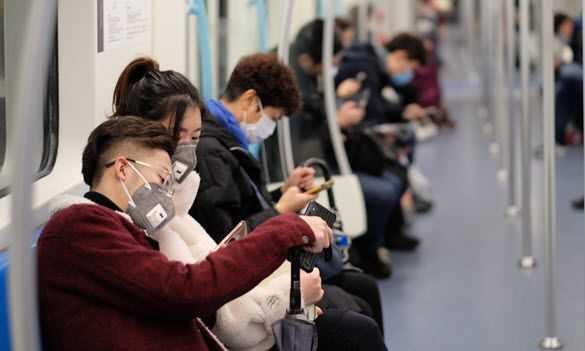![The-Life-You-Save-May-Be-Your-Own[1]](https://thelifepilot.com/wp-content/uploads/2022/11/The-Life-You-Save-May-Be-Your-Own1.jpg)
It may be unfortunate but the mixed messaging we are all getting from government officials, members of the medical community and the media, among others, is making it hard to know just what to do when it comes to protecting ourselves and others from the deadly spread of the coronavirus or COVID-19. In a single day we can hear a number of different instructions on what to do depending on who we are listening to. For example, if you turn on your TV and tune into one channel you might find the show host or a guest telling you that you should absolutely shelter in place and practice social distancing. Then, if you turn to another station you may hear that the threat to you or your community is very low and that these kinds of practices are overkill and that the health of the economy is in danger. Even the president has said multiple times the cure to dealing with this threat can’t end up being worse than the disease, itself. All this despite the fact that in the next sentence he’ll tell the country that his own official guidelines are warning people to take every precaution in defending themselves against contracting the virus.
So, it’s no wonder that so many Americans are scratching their heads and trying to figure out how they should be handling this crisis and how to best protect themselves and others without doing things that will actually hurt ourselves and our country even more in the long run. With all of that in mind, let’s take a look at how we got here, what other countries are doing and what the best path forward for ourselves is likely to be.
Protecting Yourself From coronavirus
A seemingly endless amount of information has been put out into the ether regarding what steps we should all be taking to protect ourselves from the spread of this disease. We’ve all heard about how we need to stay vigilant when it comes to keeping a safe distance of six feet or more from others whenever possible. We all now know that this virus is transmitted by bodily fluids which can spread from those infected even if they are not currently showing symptoms. We also know that we should be washing our hands as often as possible when there is a chance that we have come into contact with anyone or anything that could have been exposed to the virus.
What’s important about transmission from touching objects is that the time the coronavirus can survive on objects for variable lengths of time depending on the type of material it is made of. In a nutshell, what is understood at this time is that more porous surfaces such as paper and cloth tend to only allow the virus to live for a matter of hours under what are considered normal conditions while harder surfaces like plastic and metal offer an environment that allows the virus to live up to a few days.
With this basic information in hand we can see how important it is to do everything we can to protect ourselves. So, let’s take a look at masks, the role they should be playing in our daily lives at this point and the various ways we can get them, construct them and use them to stay safe for our sake and for others.
Should We Be Wearing Masks?

The short answer here is definitely- yes. Based on the data we have at this point one thing is clear when looking at numerous countries from around the world and the success or failure that they are having in slowing the spread of the disease. For instance, there are several countries in Asia which have shown a relatively remarkable decrease in the number of new cases with the coronavirus largely because they were much faster in responding to the crisis with the notion of wearing masks and using social distancing to reduce the transmission rate among their populations. Now, in some cases, these countries have governments that have the ability to compel the use of masks and other preventative measures. But, the end result is clear as the widespread use of masks has been proven to be an effective way to combat this invisible killer.
Finding The Right Mask
If you’ve been paying attention to the news then you know that masks are one of the top subjects being discussed everywhere. First of all, most masks used in a medical setting are designed to be single use. This means that each time a doctor or nurse interacts with someone thought to be infected, they are supposed to discard the mask before moving on to another person. The end result of this, according to the best predictions we have now, is that this will mean that our medical staff, just in the United States, will need literally billions of masks to deal with potential patients. And, being that those masks have been hard to come by due to shortages, it doesn’t seem like civilians buying medical grade masks is likely for most of us.
On top of that, there are a number of different grades of masks and their uses should be clearly understood before taking them into battle against this foe. The bottom line on this subject is that we, the general public, do not need to have medical grade masks for the simple fact that, as much as we would like to protect ourselves, the main reason for using them is that they can help us to protect the people around us. Now, some people might say that they are not worried about others as much as themselves but wearing a mask prevents you from spreading the virus much more than it is for protecting you from other people.
Masks And Behavior
First, let’s keep in mind the goal of making a mask that will be likely to accomplish the goal that you set for it. The key thing to remember is that this novel strain of the coronavirus is transmitted through the spread of bodily fluids such as by sneezing or coughing. The droplets of fluid could also be sent into the air just by the acting of talking. So, what we need is a mask that prevents our own fluids from being released into the air where others could come into contact with it even more than preventing others droplets from coming into contact with us.
One problem that some are saying is an issue with people using masks is that many of us are unfamiliar with protective mask protocols. This means that there are concerns that those of use using improvised masks really don’t understand how they are supposed to be used and, therefore, are more likely to end up touching our faces more than if we didn’t use one at all. There may be some merit to this argument but there have not been any studies that we are aware of that show that using masks, even if improvised or with a lack of protocol knowledge has led to any increase in virus transmission. In fact, all of the available evidence suggests that the use of masks by the general public only inhibits the spread of the disease.
Actions Speak Louder Than Words
When it all comes down to it, it’s been proven that any real steps that can be taken to protect ourselves and others can slow the spread of the coronavirus. So, instead of talking about it or making signs or pins with pithy messages, it would be much wiser for all of us to take concrete actions that could help, even if in some small way, to keep our own fluids to ourselves. That said, those of us who can wear a bandana over our faces or learn how to sew a mask from materials that are cheap and plentiful and don’t take valuable materials away from our frontline health workers who need them so desperately will be doing their part to control this pandemic and put us all in a position where we may be able to get back to something that resembles something like what we used to known as normal.
In the end, if you won’t do it for yourself, then do it for some you love, someone you may not really know or even a total stranger. What should be clear to everyone right now is that this is a crisis that very few people have seen in their life times and what we need to do now, more than ever, is work together for the common good. Remember, in times like these, we are all truly in this together.
If you do want or need more protection than a bandana, as of this writing, there are some available here.







